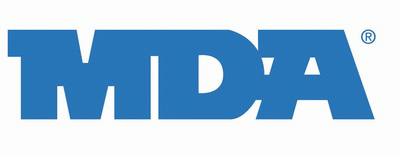1945 - 2015
Posted: Monday, January 12, 2015 by Travis Cody inIt was 70 years ago that World War II came to an end. I want to write selectively and strategically throughout the year in commemoration.
In general, this can often be difficult to do over long periods of time because the composition of the world can change. Also, all countries don't use the same census methods. I don't really want to get bogged down too much in statistical variation and such...the information is more for flavor than to make any political or mathematical point.
So, here are population figures for 1945 and 2015 as pulled from a site called WolframAlpha, a computational knowledge site. Obviously 2015 is only a couple of weeks old, so the values listed are live at this point in time as calculated by the site. These are the main countries that made up the Allied and Axis powers. I have included China, which has steadily emerged as a world power during the 70 years since WWII ended.
- Global: 1945 = 2.35 billion; 2015 = 7.28 billion
- United States: 1945 = 140 million; 2015 = 326 million
- United Kingdom: 1945 = 49.2 million; 2015 = 63.9 million
- France: 1945 = 39.7 million; 2015 = 64.4 million
- Russia: 1945 = 99.2 million; 2015 = 142 million (not Soviet Union or Russian Federation)
- Germany: 1945 = 69.3 million; 2015 = 81.5 million
- Japan: 1945 = 72 million; 2015 = 126 million
- Italy: 1945 = 45.4 million; 2015 = 61.2 million
- China: 1945 = 533 million; 2015 = 1.37 billion
What else can we review to see how the world has changed? How about money? We know that WWII began amidst global economic depression. We know that economies in general are dynamic. They are volatile in the short term, expanding and contracting in reaction to all kinds of factors. But over the long term they typically grow.
So let's look at how incomes and prices have changed since 1945. These values are from the US only.
- Annual median income: 1945 = $2,600; 2014 = $53,891
- Hourly minimum wage: 1945 = $0.30/hour; 2015 = $7.25 to $9.32/hour
- Median price of a new home: 1945 = about $8,600; 2015 = about $311k
- Average price of a new car: 1945 = about $1,220; 2015 = about $30k
- Average cost of a gallon of gas: 1945 = about $0.21; 2015 = about $3.18
- Average cost of a loaf of white bread: 1945 = about $0.09; 2015 = about $1.41
- Average cost of a dozen eggs: 1945 = $0.64; 2015 = about $1.95
- Cost of a postage stamp: 1945 = $0.03; 2015 = $.49
- Average cost of a movie ticket: 1945 = about $0.32; 2015 = about $8.12
What did you pay the last time you went to the movies?
 In 1945, there were only about 10,000 TV sets in American homes. Radios, however, were ubiquitous around the world and often a lifeline to freedom outside war ravaged occupied territory. The cost of owning a television was about $100, close to half your monthly salary if you're making $2600 a year. The cost of a radio was about $36. In 2007, there were about 285 million TV sets in US households, costing anywhere from $200 to several thousand dollars depending on screen size and type. Digital music and satellite radio also have added significantly to our entertainment and information choices when we step away from the TV.
In 1945, there were only about 10,000 TV sets in American homes. Radios, however, were ubiquitous around the world and often a lifeline to freedom outside war ravaged occupied territory. The cost of owning a television was about $100, close to half your monthly salary if you're making $2600 a year. The cost of a radio was about $36. In 2007, there were about 285 million TV sets in US households, costing anywhere from $200 to several thousand dollars depending on screen size and type. Digital music and satellite radio also have added significantly to our entertainment and information choices when we step away from the TV. In 1945, there were 6 types of operational jet aircraft in the world. On 20 July 1969, Neil Armstrong and Buzz Aldrin walked on the moon. And late in 2014, an international space probe landed on a comet.
I could go on. Of course, we're all aware that the world is different than it used to be. Change is constant and inevitable. You can pick up your smart phone right now and access more information than you could find on your bookcase in a set of Encyclopedia Britannica in 1945.
One could argue that things were simpler 70 years ago. I recall a scene in the film The Longest Day, which depicted the Allied landings at Normandy on 6 June 1944. The scene was of a US 82nd Airborne trooper dropping on an unsuspecting French woman in the town of Ste Mere Eglise. She had been going to "the little house" when he dropped out of the sky, told her "shhh", and moved on about his business.
"The little house" is a euphemism for outhouse. Translation...no indoor plumbing at her home. Simpler time, but surely not easier or even desirable.
For my part, I'll take today's conveniences over the mythical simplicity of a bygone era.
Thanks to my pal Debra for sharing a terrific find as she researched family history and her father's service in WWII. Check back with me once in awhile through 2015 as I share my thoughts with you about 1945. I'll check in with you too, and maybe you can tell me something about 1945.
Cheers gang.






















Wow, that population increase is scary.